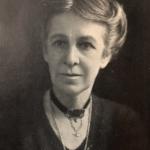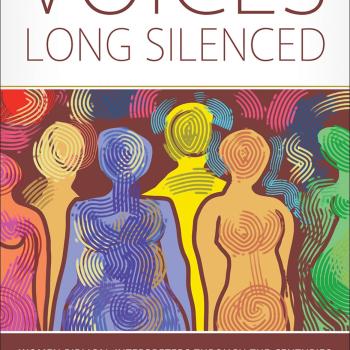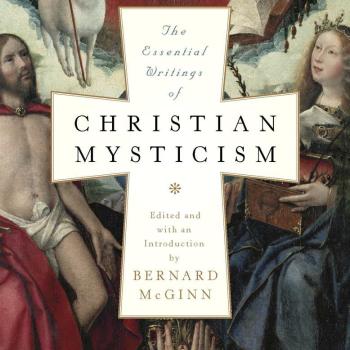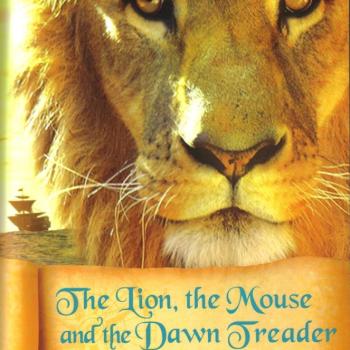This month marks nine years since The Big Book of Christian Mysticism was published. Hard to believe it’s been that long! To mark this anniversary, I’m reposting here an “author’s statement” about the book that I originally wrote for Amazon. Hope you enjoy it (and if you haven’t read The Big Book of Christian Mysticism… well, what are you waiting for?!?!)
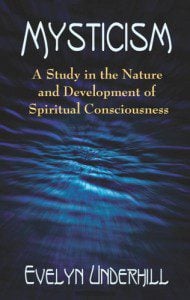
When I was eighteen years old, a friend of mine loaned me a copy of Evelyn Underhill’s Mysticism: A Study in the Nature and Development of Spiritual Consciousness. Like many folks raised in a mainstream Christian context, I had no idea that Christianity had such a rich and storied history of men and women who experienced profound, life-changing mystical encounters with God — nor did I have any sense that such a tradition could remain relevant, even today.
But Underhill’s book opened the door to that wondrous spiritual world for me, and I have been an enthusiastic seeker of the mysteries ever since. I’ve come to believe that mysticism is Christianity’s “best kept secret,” and that a renewed understanding of, and appreciation for, Christian mysticism can help Christians find greater meaning and joy in their faith, and help non-Christians to see the wisdom tradition that began with Jesus of Nazareth in a new light.
Given how important Underhill’s book has been to my own spiritual life, I discerned a desire to write an introduction to Christian mysticism for the third millennium. While my book can never replace or supplant hers, my hope is that it can help introduce its readers to the splendor and beauty of Christian mysticism, just as Underhill’s book made that introduction for me.
So on a very personal level, The Big Book of Christian Mysticism is my way of saying “thank you” to Underhill — and beyond her, to God, who Christians believe is the source of all true mystical experience.
A Mystical Pioneer
Evelyn Underhill was a brilliant scholar who spent years researching the history and literature of mysticism. Her pioneering work led to further studies by such renowned academics as Bernard McGinn, Harvey Egan, Andrew Louth, and the late Grace Jantzen. My book is designed to serve as a complement to such important researchers and theorists.
The Big Book of Christian Mysticism bridges the gap between the “ivory tower” of scholarly studies of mysticism, and the everyday experience of ordinary Christians, for whom mysticism is not a topic for bookish research, but rather an invitation to a deeper experience of God. Because I assume that my readers may not know anything about mysticism (or, for that matter, anything about Christianity!), it can be an ideal introductory book.
My spiritual journey, like that of many seekers in our time, has been marked by a variety of twists and turns. I was raised a Lutheran Christian, moving to the Episcopal/Anglican communion as a young adult. But I was also drawn to the wisdom of other traditions, including Buddhism and Neopaganism. Eventually I spent about seven years outside of Christianity, exploring Wicca, shamanism, Goddess spirituality, Celtic Druidism, Ken Wilber’s Integral Theory, among other spiritual paths.
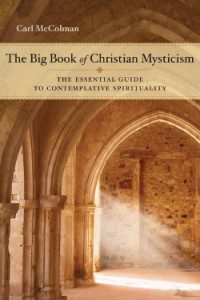
But the Christian contemplative path called me back, and in my 40s I entered the Catholic Church, placing myself under the spiritual guidance of Cistercian monks and Benedictine wisdom. What all this means is that I’ve been able to ponder the meaning of Christian mysticism for people both inside and outside the institutional expression of Christianity (the church).
With this in mind, I endeavored to write The Big Book of Christian Mysticism both for Christians who might be new to the topic of mysticism, but also for people outside of the Christian tradition, who may or may not be students of the mysteries, but who are unfamiliar with how mysticism has been uniquely experienced and expressed within the lineage of those who follow Jesus of Nazareth.
A Spiritual “Location”
Mysticism is a wonderful “location” of spiritual experience, particularly for those who are more drawn to what unites all people, rather than what separates us. All through history, Christian mystics have been at the forefront of interfaith dialogue: the great conversation between people of different religions. Unlike how some Christians too often approach “others” merely as targets for conversion, the great mystics and contemplatives of the Christian faith, especially in the recent past and present, see mysticism as the bridge that enables fruitful and positive interaction across religious boundaries.
Thus, Thomas Merton explored Buddhism, and Henri Le Saux became so immersed in Vedanta that he even took a new religious name as Swami Abhishiktananda. More recently, contemplatives like Cynthia Bourgeault, Tilden Edwards, Mary Margaret Funk, and Paul Knitter have been leaders on the frontier where Christian spirituality engages with the wisdom of other traditions. The Big Book of Christian Mysticism is not an interfaith book per se: it really is intended to serve as an introduction to the distinctively Christian expression of mysticism.
But it is written as a contribution to an understanding of spirituality that is both deep (as in deeply-rooted in the Christian path) and inclusive (open to the wisdom of others). It is my hope that readers who do not identify as Christians will nevertheless find in this book a lovely expression of a particular stream of spirituality. Meanwhile, those readers who do identify as Christians will find themselves called to a deeper, richer, more intimate, and hopefully transformational dimension of their faith.
What Makes a “Big” Book Big?
One final word: I’m rather embarrassed by the book’s title. Here’s the inside story. My editor came up with the idea of calling this work the “big book” because, in early conversations before I actually started writing it, we envisioned a tome rather like Underhill’s: 500+ pages long, providing more information about mysticism than you’ll ever need. But as I wrote the book, I began to question whether my goal of writing an accessible introduction to Christian mysticism would really be served by making this book so long that it could seem intimidating. My editor agreed, and eventually the book ended up being about half the length we originally thought it would be.
Which I’m perfectly happy with — except neither he nor I thought to revise the title. Oops! I’ve had a few readers scratch their heads over how “little” this “Big Book” is. Thankfully, only a couple of snarky reviewers have attacked the title, and then there’s Richard Rohr, who very kindly told me he thought the title was “whimsical.” Maybe in a future edition we can drop “The Big Book of” and just call this work Christian Mysticism: A Guide to Contemplative Spirituality. But for now, it is what it is. I humbly hope you’ll order yourself a copy. Just don’t be surprised at how “normal-sized” this so-called “Big Book” is!
2019 Update: since I wrote this, I completed the material that originally was meant to be the second part of the Big Book — published in 2016 as Christian Mystics: 108 Seers, Saints and Sages. And at my editor’s suggestion I edited a devotional book on the writings of the mystics which we called The Little Book of Christian Mysticism — a fitting (and smaller-sized) companion to the other two books!
Enjoy reading this blog?
Click here to become a patron.



